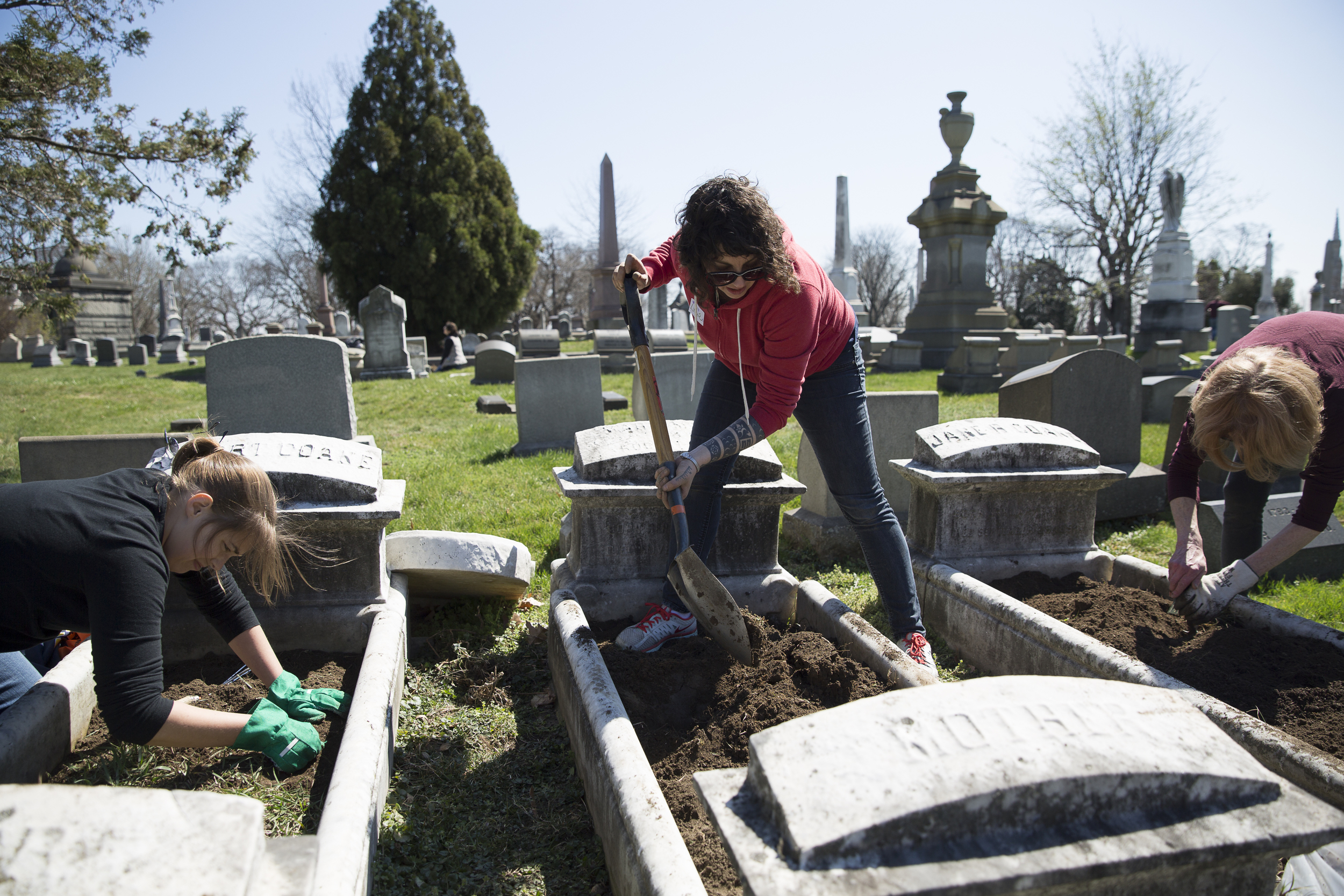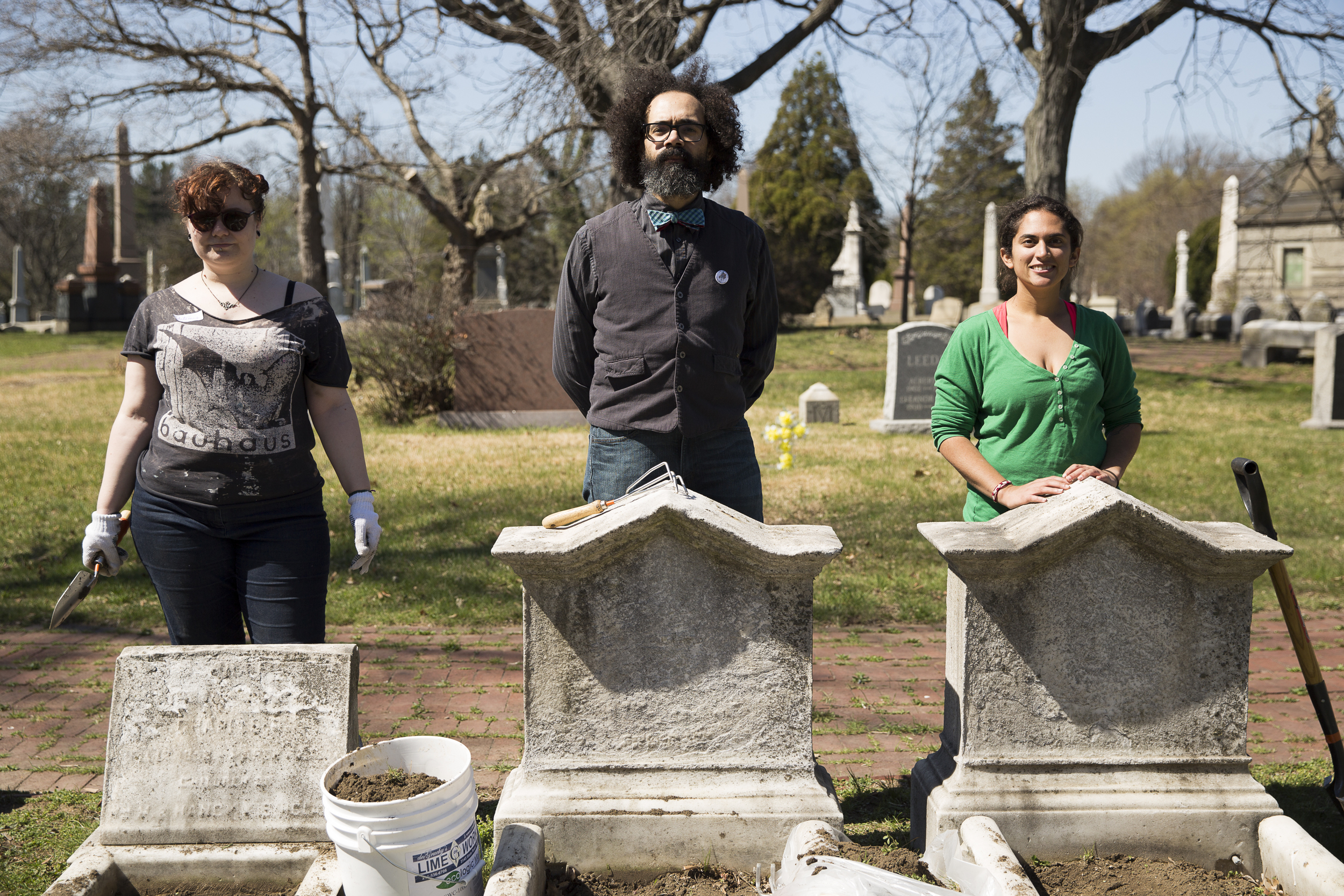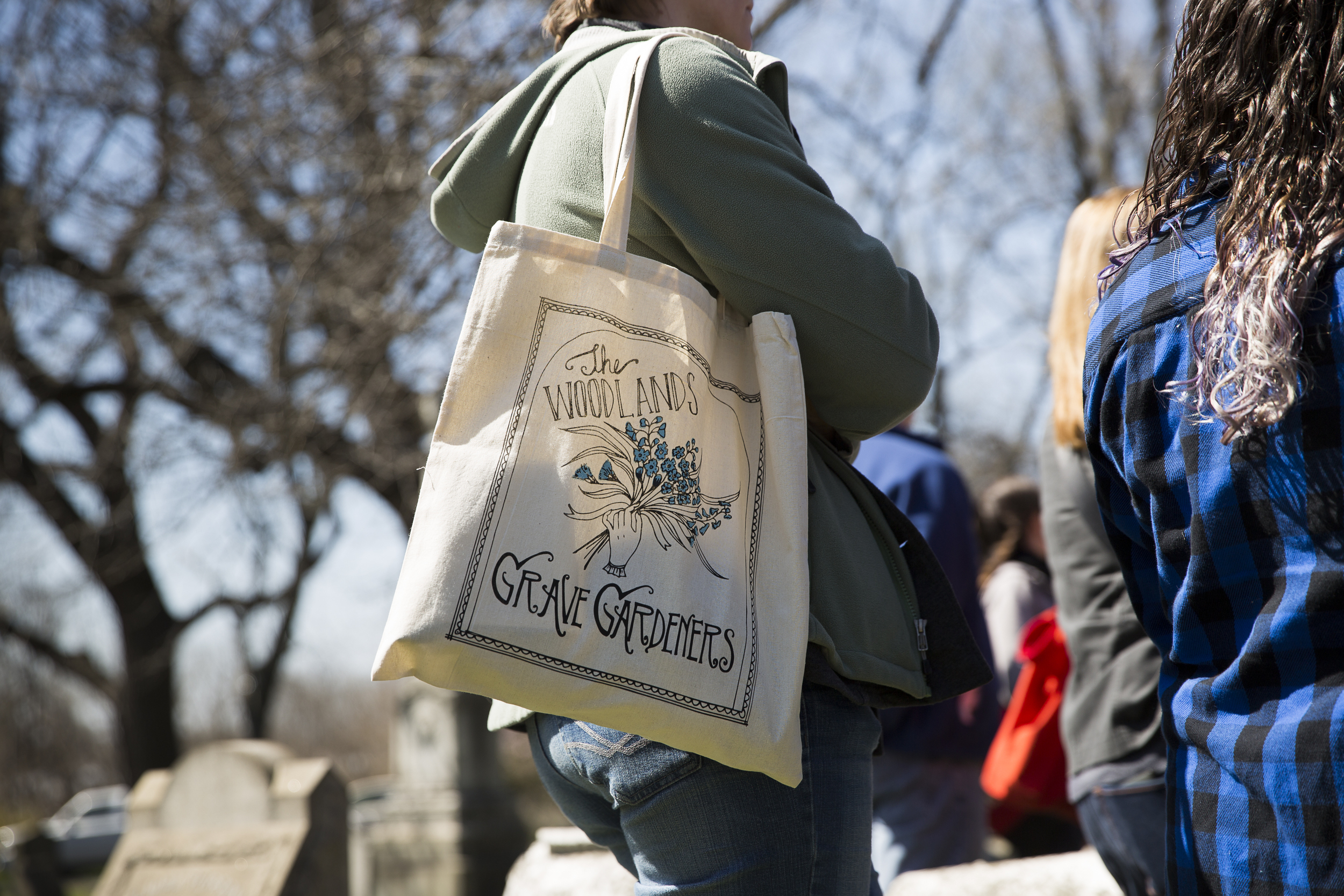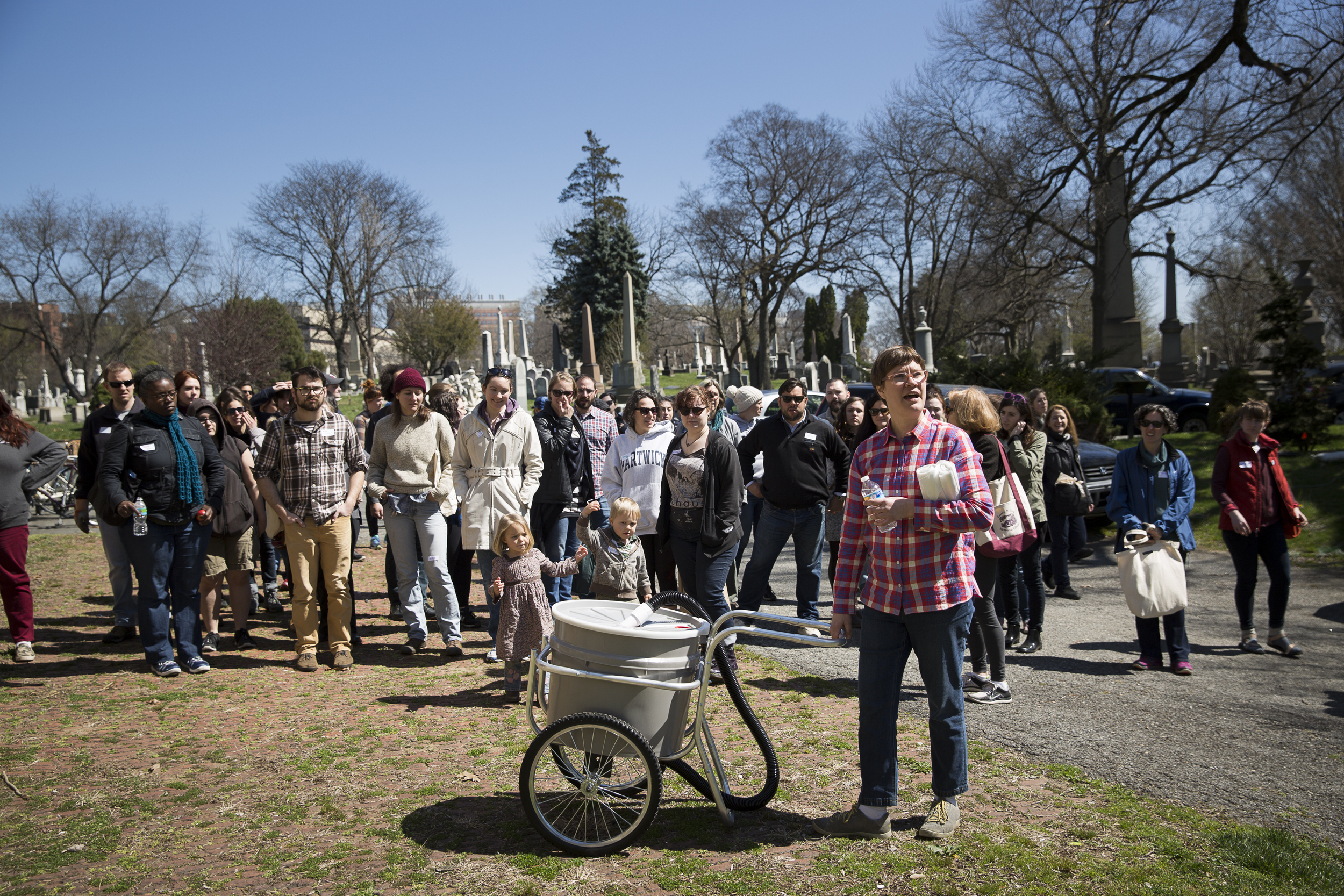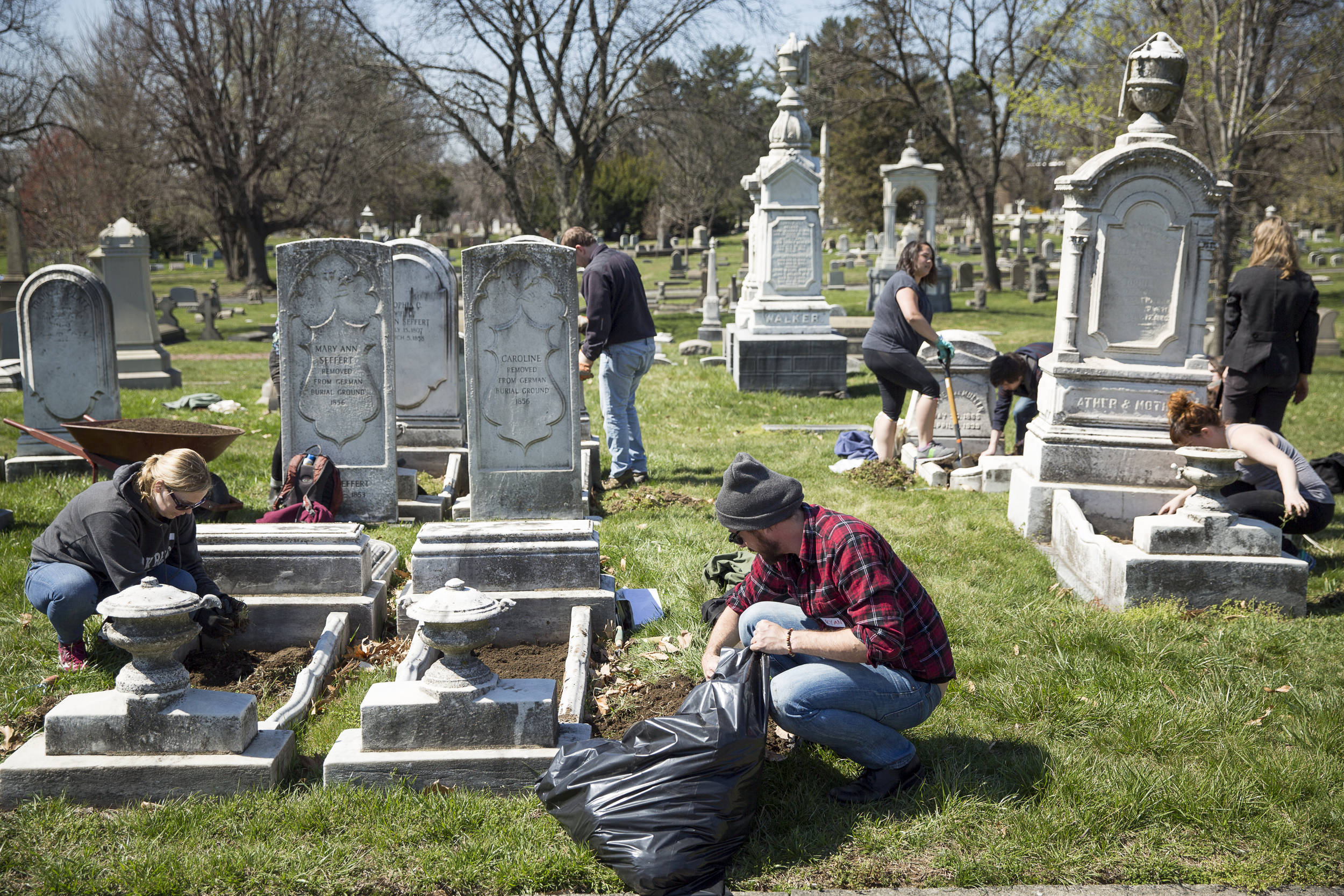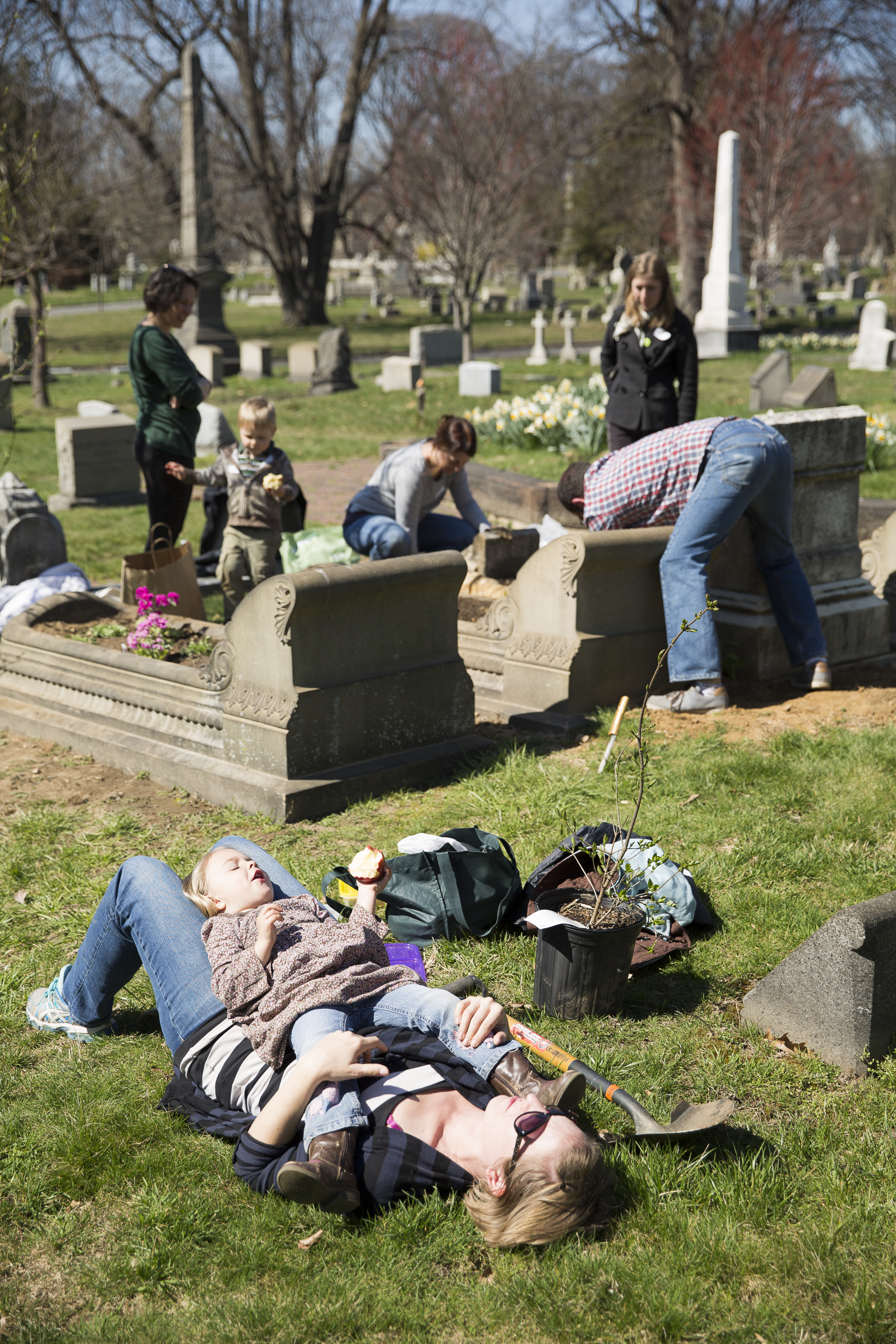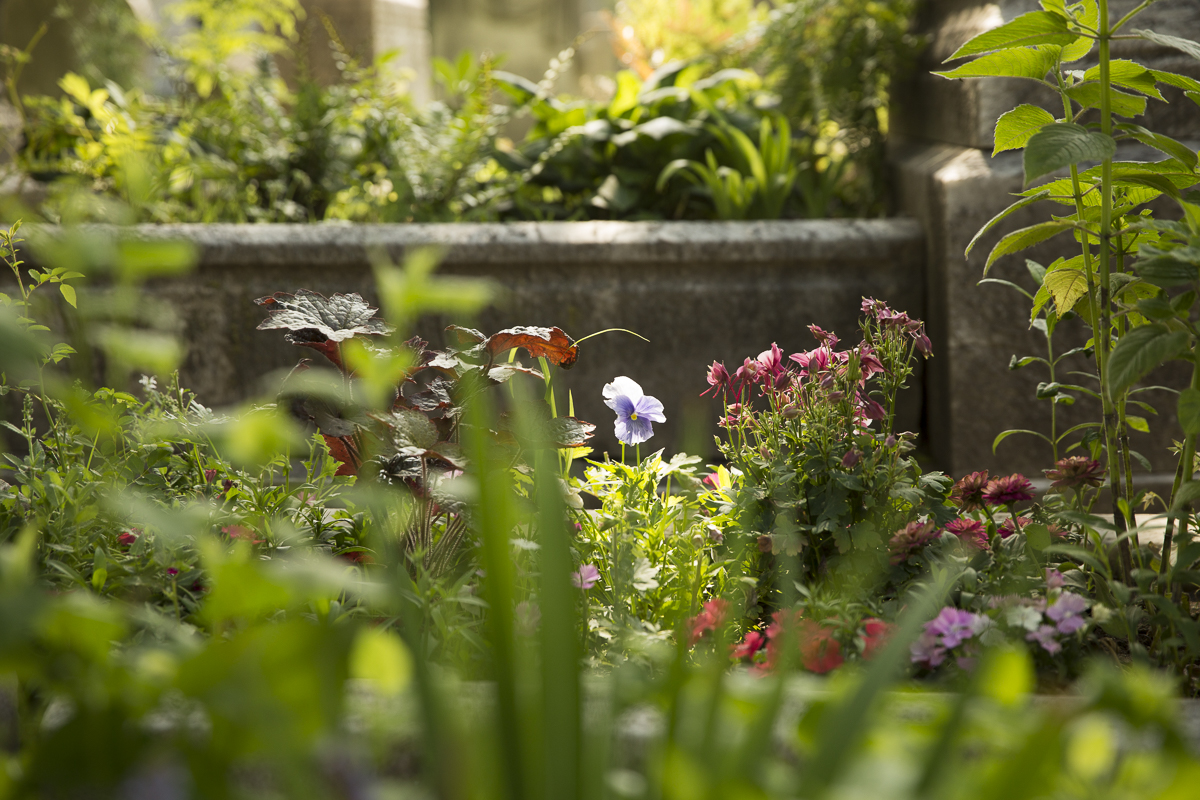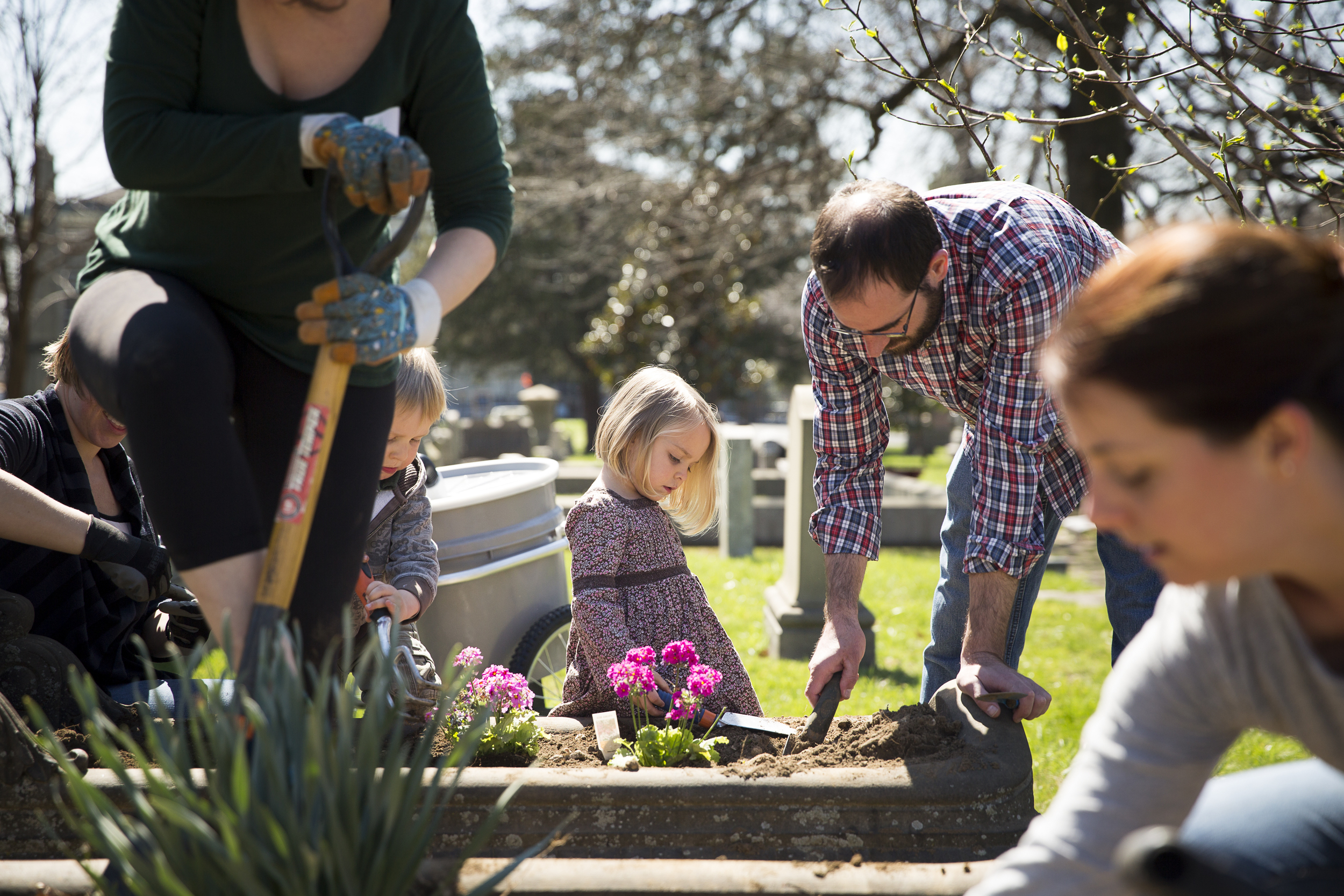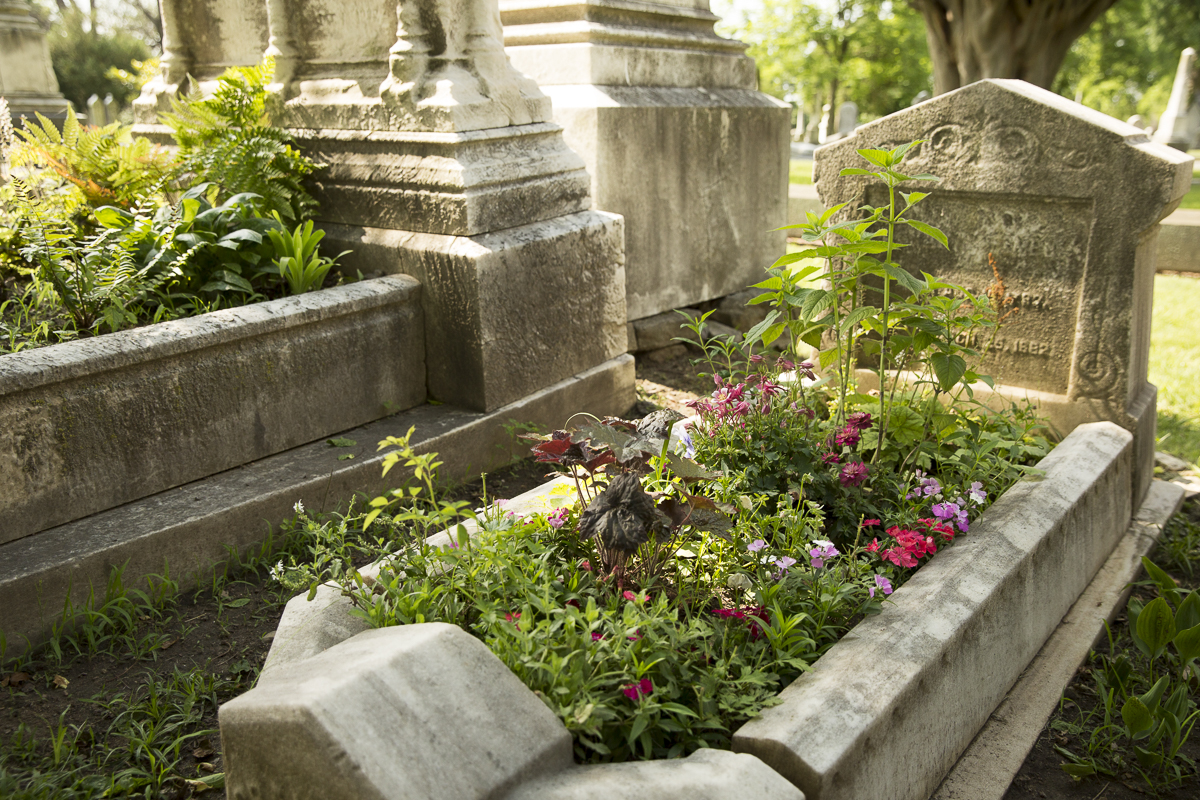PHILADELPHIA, April. 15 — This is a PSA and a call for support from The Woodlands community to help spread the word: people have been taking flowers from The Woodlands and this is unacceptable. Twice this week alone, visitors were seen removing flowers from the cemetery for their personal use, including cuttings from Grave Gardens and our flowering trees.
Read MoreThe Woodlands Announces 2024 Grave Gardener Application Period
PHILADELPHIA, Jan. 8 — The Woodlands Cemetery in West Philadelphia has officially launched the 2024 Grave Gardener application period. Starting in January, nearby residents have the opportunity to apply for a volunteer role tending a cradle grave at the historic 54-acre cemetery. The application window extends through Wednesday, January 17, 2024.
Read MoreGrowing Community with The Woodlands Grave Gardeners
The Grave Gardener program is entering its 5th year come Spring 2020, and the application period to join this internationally famous group of volunteers is open right now, through January 15th. Many are familiar with the program, either from watching our segment on CBS Sunday Morning, reading about us in the Associated Press, or seeing our name in blogs like Atlas Obscura and The Order of the Good Death. The Grave Gardeners have inspired a new wave of gardening, and we’ve seen it spread to other historic cemeteries in our own back yard, to small and large cemeteries across the country, and to individuals tending the gravesites of strangers and loved ones all over the world. It has been an incredible 5 years.
Hamilton Mansion (river view) 1907.
The history of The Woodlands is steeped in horticulture. When William Hamilton inherited 250 acres on the west bank of the Schuylkill River, he turned The Woodlands into his full time home. Between 1770 and 1813, Hamilton transformed the area now known as University City into his English country style estate, complete with the first Federal Mansion built in America, the most important greenhouse in the country at that time, and over 90 acres of English style pleasure gardens. William Hamilton’s gardening efforts were so significant, Thomas Jefferson sent a large amount of the botanical collection acquired by Lewis and Clark on their journey to The Woodlands for germination and study. After Hamilton died in 1813 with no direct heirs, his estate was left to other family members, and from there fell into disrepair. Seed and Nurserymen like Henry Dreer rented the greenhouse to expand their own businesses, and parts of the estate were being reallocated for uses like an Almshouse and later the University of Pennsylvania. In 1840, The Woodlands Cemetery Company was formed under the leadership of Eli K. Price as an early act of preservation to save the Hamilton Estate from the growth of industrialization taking place along the Schuylkill. (You can read all about this history and more with our online resources!)
During this time, rural cemeteries acted as an early form of public parks, and city residents enjoyed spending time in cemeteries like The Woodlands to picnic, garden, and enjoy time outdoors. A popular headstone style during the Victorian Era, “Cradle Graves” were a common style of headstone installed by families at The Woodlands. They would be tended by individual families with flower gardens, but in recent decades have only been filled with grass. The Grave Gardeners are adopting these cradle graves and bringing the gardens back.
Many people might not know the full value of the Grave Gardeners to The Woodlands as an organization, or how the program has transformed this not-so-hidden gem in West Philadelphia. Five years ago, The Woodlands was a 54-acre private non-profit Cemetery and Historic Trust, with over 30,000 burials, more than 700 trees, and only two full time staff (we’re now a team of three!). The gates were open every day to welcome members of the community from students, to travelers, and families from the neighborhood to explore and learn in an open green space. The landscape had plenty to offer, but we knew we could do more if we had a little help.
We’re breaking down a few (out of countless) reasons the Grave Gardeners make The Woodlands special, and we hope it inspires you to apply to be a part of this transformative group of people (just remember to do so by January 15th).
They multiply resources. As a three person staff, it is incredibly challenging and rewarding to be the stewards of this National Historic Landmark District. We create programs, cultivate a growing community, and watch over our permanent residents, historic structures, and trees. The Grave Gardeners give us the opportunity to propagate plants and keep things alive within the cemetery. Planting flowers and trees is relatively easy. Keeping these young plants alive is hard. The Grave Gardeners do a fantastic job, and we couldn’t keep everything growing without them.
The Grave Gardeners have an endless amount of enthusiasm. When we first considered what the Grave Gardener program would look like, we imagined 20 committed people who all lived nearby, liked to garden, and were interested in learning more about the people who were buried in The Woodlands. We ended up with 75 people who felt committed to this place, and wanted to literally get their hands dirty in an effort to learn more and help beautify the landscape for all 35,000 annual visitors to enjoy. They attend workshops in the winter for a crash course into the practice of gardening in cemeteries, why Philadelphia is a hot spot for horticulture, and how best to plant and design a diverse grouping of fillers, spillers and thrillers (If you know, you know. And if you don’t, we’ll teach you!) into a Victorian era cradle grave. Today there are about 130 Grave Gardeners who take this enthusiasm for learning and focus it on weeding, watering, and sharing it with their friends and family.
Each year they put us face to face with the best possible problem. So many people apply to be a part of the program, we sadly can’t accept them all. There are other ways to get involved though! We have a robust volunteer group full of people who help with landscape clean up days, special projects, and help make public events go smoothly. You can take a Thursday tour to learn more about The Woodlands history and new research to share with family and friends as you explore the grounds. You can even make plans to be buried here and continue the ongoing tradition of this being an active cemetery. While we can only accept Grave Gardeners during a short window in January, you can enjoy the cradle graves and floral landscape 365 days a year from dawn to dusk.
Have we piqued your interest? You can learn even more about becoming a 2020 Grave Gardener and apply today.
Grave Gardener Leslie Grossman preps her cradle for planting during the first planting day. Photo: Ryan Collerd
Reintroducing The Woodlands Grave Gardeners!
If you’re a regular visitor of The Woodlands or follow us on social media, you have probably noticed that a number of “cradle graves” (the headstones with bathtub-shaped planters extending out in front) have finally been getting some attention and are filling up, once again, with flowers. This wonderful development is the result of our newest volunteer program The Woodlands Grave Gardeners.
Beginning in February, a large group of volunteer gardeners attended a series of workshops culminating in the planting of over seventy Victorian-inspired gardens in cradle graves around The Woodlands. The preliminary workshops and lectures prepared the gardeners for the actual hands-on planting of their graves, provided information on appropriate heirloom plant varieties, and provided historical context for the program.
A representative from the Pennsylvania Horticultural Society gives a planting demonstration. Photo: Ryan Collerd
Gardening in cradle graves is essentially container gardening or trough gardening. Our planting list, crafted and curated by heirloom plant expert Nicole Juday, includes varietals that would have been common in this area in Victorian times and is full of perennials, roses, bulbs and ferns. The list is a guideline, though using period-appropriate, heirloom flowers and plants is fundamental to the program. Luckily, these tend to be more fragrant than contemporary varieties and also naturalize readily (meaning they will spread out and re-seed). In fact, some of the cradle graves already contained bulbs that had done just this (turns out historic cemeteries are great spots for finding heirloom flowers!). Nicole helped us split existing bulb clusters into smaller bunches that we shared with the gardeners so we could spread the love! So, what’s the biggest no-no when planting an “authentic” Victorian garden? No variegated leaves. Really—they weren’t around back then!
Gardeners supplemented seeds and plugs with plants purchased from the Bartram's Garden spring plant sale. Photo: Ryan Collerd
The cradle grave typology was particularly popular from the late 19th through early 20th century. At one point, most would have been planted and maintained, but over the course of the past century or so, they have come to sit empty. It may seem a little odd to get that up close and personal with someone’s final resting place, especially when taking a shovel to the dirt. Interestingly, most of our gardeners have reported that they really enjoy this aspect of the program; taking time to care for someone’s lot lets them reflect and brings a sense of calm. Some have even gone lengths to do genealogical research on their lot residents, uncovering interesting details that inspire whimsical and imaginative planting themes.
As one of the first rural cemeteries in the city, The Woodlands also functioned as one of the earliest public parks. In the Victorian Era, it was common for family members to maintain gardens in their family cemetery plots and even to spend time on the weekends picnicking and enjoying the space. In fact, The Woodlands became so crowded by those seeking a pleasant weekend respite that in 1852, management had to implement an admissions system requiring tickets for entry during peak hours. Lot owners were granted tickets automatically, but the rest were distributed to the public per managerial discretion.[1] Part of what continues to make The Woodlands such a beloved site is that it welcomes the public every day from dawn till dusk for a broad range of activities and uses. The Grave Gardeners program takes things a step farther and allows users to be active participants in beautifying and caring for the space once again.
Ferns and flowers give the gardens a Victorian feel. Photos: Ryan Collerd
It has been wonderful to watch our first season of planting unfold. For the pilot run of the program we limited planting to sections that are close to the Mansion and to Center Circle, but moving forward we hope to complete an inventory of all cradle graves on site (we estimate there are between 300-400). We plan to expand the program next year and will be accepting new applications in the fall. In anticipation, we have put together an outstanding bulb order for fall planting, focused on heirloom varieties from the 18th to 19th century. The order was tailored to cradle grave gardening, but also includes bulbs that we will plant en masse throughout the cemetery. Meaning, we anticipate thousands of fragrant spring blooms!
Come enjoy the gardens in person and join us Saturday, September 17th when we will host our inaugural Grave Garden Fete, a day full of cemetery picnicking, plant and flower-related workshops, demonstrations and garden-viewing. It will be a throwback to the Victorian days meant to showcase our Grave Gardens, so bring family, food and drink and lay out a blanket to enjoy the beauty of The Woodlands! More details on the Grave Garden Fete HERE.
By Starr Herr-Cardillo
Photos: Ryan Collerd
[1] Wunsch, Aaron. “Woodlands Cemetery,” HALS No. PA-5







